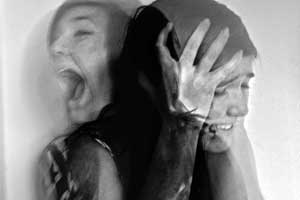- Home
- Editorial
- News
- Practice Guidelines
- Anesthesiology Guidelines
- Cancer Guidelines
- Cardiac Sciences Guidelines
- Critical Care Guidelines
- Dentistry Guidelines
- Dermatology Guidelines
- Diabetes and Endo Guidelines
- Diagnostics Guidelines
- ENT Guidelines
- Featured Practice Guidelines
- Gastroenterology Guidelines
- Geriatrics Guidelines
- Medicine Guidelines
- Nephrology Guidelines
- Neurosciences Guidelines
- Obs and Gynae Guidelines
- Ophthalmology Guidelines
- Orthopaedics Guidelines
- Paediatrics Guidelines
- Psychiatry Guidelines
- Pulmonology Guidelines
- Radiology Guidelines
- Surgery Guidelines
- Urology Guidelines
Insomnia and hypersomnia linked to bipolar disorder subtypes: JAMA

UK: Patients with different bipolar disorder (BD) subtypes differ in their sleeping durations such as insomnia, hypersomnia, suggests a recent study published in the JAMA Psychiatry journal.
According to the study, patients with bipolar disorder I are at significantly greater genetic liability to sleep for longer durations while patients with bipolar disorder II were at a greater genetic liability to insomnia. Replicating the results in an independent sample, the research team further found that people with bipolar subtypes did not differ in genetic liability to morning or evening chronotype.
Bipolar disorder is a brain disorder that causes unusual shifts in mood, energy, activity levels, and the ability to carry out day-to-day tasks. It is characterized by episodes of mood swings, between being very up or very down with periods in between the two extremes. There are four basic types of bipolar disorder;
- Bipolar I Disorder - defined by manic episodes that last at least 7 days, or by manic symptoms that are so severe that the person needs immediate hospital care.
- Bipolar II Disorder— defined by a pattern of depressive episodes and hypomanic episodes, but not the full-blown manic episodes.
- Cyclothymic Disorder (also called cyclothymia); and
- Other Specified and Unspecified Bipolar and Related Disorders
Read Also: Bipolar Disorder patients at increased risk for Parkinson disease: JAMA Neurology
Bipolar disorder patients commonly suffer from insomnia and hypersomnia and have an evening chronotype. However, it is unknown whether this reflects shared genetic liability. Understanding the association between sleep and BD is important and could inform clinical interventions.
Katie JS Lewis, National Centre for Mental Health, Cardiff University, Cardiff, UK, and colleagues conducted the study to assess whether polygenic risk scores (PRSs) for sleep traits are associated with BD subtypes I and II.
For the purpose, they conducted a case-control study in the UK and Sweden involving 4672 patients with bip0olar disorder and 5714 control participants. Multinomial regression was used to assess whether PRSs for insomnia, daytime sleepiness, sleep duration, and chronotype are associated with BD subtypes compared with control participants. Affected individuals were recruited from the Bipolar Disorder Research Network. Control participants were recruited from the 1958 British Birth Cohort and the UK Blood Service. Analyses were repeated in an independent Swedish sample from August 2018 to July 2019. All participants were of European ancestry.
Associations between (1) insomnia PRS and BD-II and (2) sleep-duration PRS and BD-I were replicated in the Swedish sample of 4366 individuals with BD (2697 female participants [61.8%]; 2627 with BD-I [60.2%]) and 6091 control participants (3767 female participants [61.8%]).
Read Also: Can early symptoms predict bipolar disorder? Evidence shows differing patterns of risk factors
Key findings of the study include:
- Insomnia GRS was associated with increased risk of BD-II (RR=1.14) but not BD-I (RR=0.98) relative to controls.
- Sleep duration GRS was associated with an increased relative risk of BD-I (RR=1.10), but not BD-II (RR=0.99).
- Daytime sleepiness and chronotype GRS did not distinguish bipolar subtypes.
- Chronotype and daytime-sleepiness PRS were not associated with BD subtypes.
"To our knowledge, this is the first study to explore whether genetic liability for sleep traits is associated with clinical strata of individuals with BD," wrote the authors.
“Bipolar disorder subtypes differ in genetic liability to insomnia and hypersomnia, providing further evidence that the distinction between BD-I and BD-II has genetic validity. Future work should explore potential mechanisms underlying differences between the BD subtypes in genetic liability for sleep traits," they concluded.
The study, "Comparison of Genetic Liability for Sleep Traits Among Individuals With Bipolar Disorder I or II and Control Participants," is published in the JAMA Psychiatry journal.
DOI: https://doi.org/10.1001/jamapsychiatry.2019.4079

Disclaimer: This site is primarily intended for healthcare professionals. Any content/information on this website does not replace the advice of medical and/or health professionals and should not be construed as medical/diagnostic advice/endorsement or prescription. Use of this site is subject to our terms of use, privacy policy, advertisement policy. © 2020 Minerva Medical Treatment Pvt Ltd